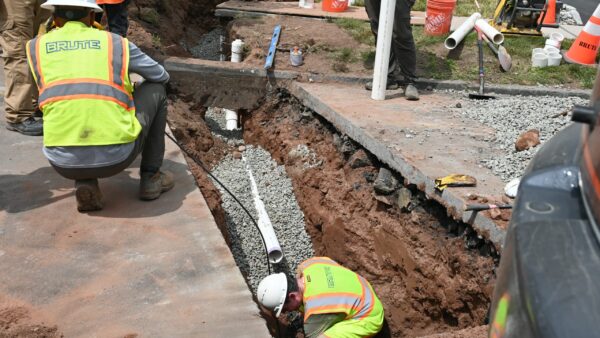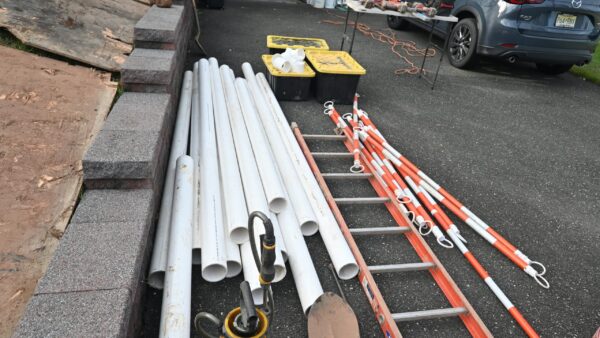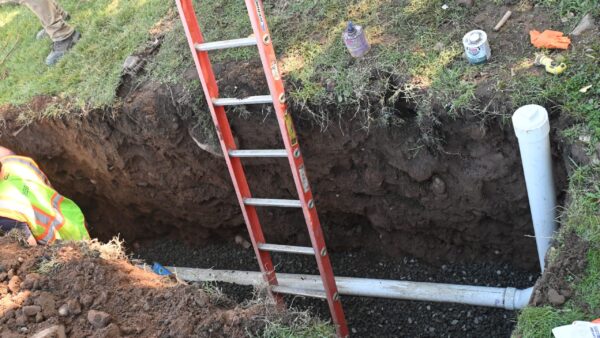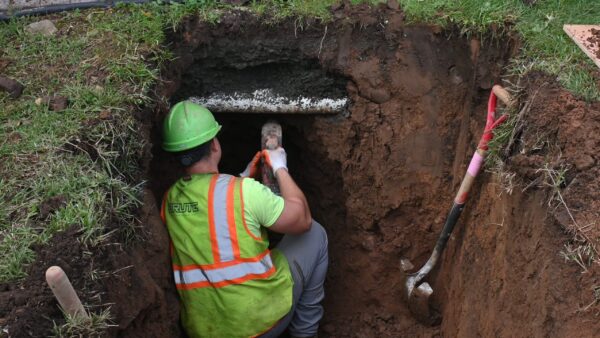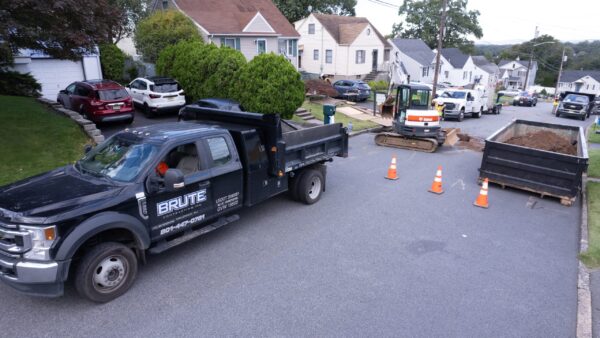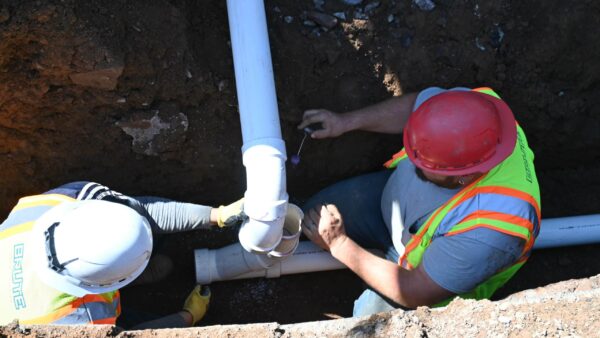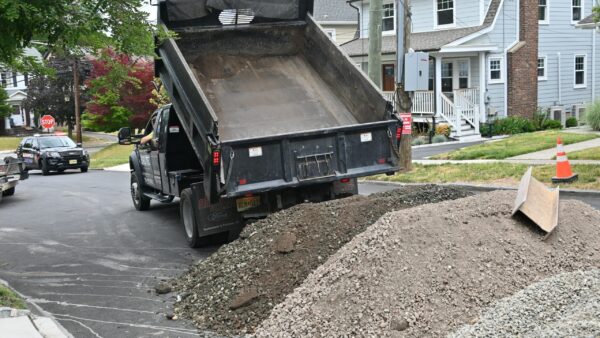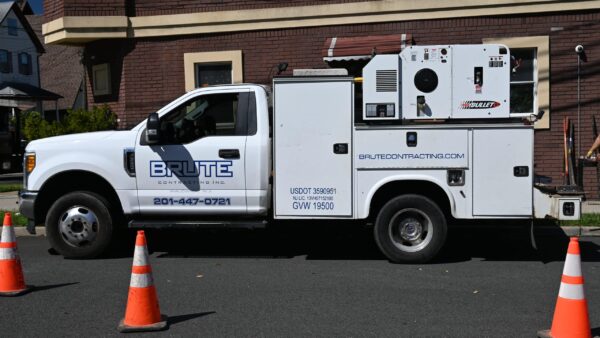Blogs
New Jersey’s Leading Water Main & Sewer Contractors
Should You Repair or Replace Your Main Sewer Line?
Deciding whether to repair or replace your main sewer line depends on several factors, including the extent of the damage, the age of the existing sewer line, your budget, and your long-term plans for the property. Here are some considerations to help you make the decision: Main Sewer Line Repair or Replacement Considerations 1. Extent of Damage: If the damage to your sewer line is minor, such as a small crack or a single blockage, repair may be a cost-effective option. However, if the damage is extensive, such as multiple cracks, collapsed sections, or tree root intrusion, replacement might be […]
Read MoreHow Much To Line Sewer Pipe?
The cost to line a sewer pipe, also known as trenchless sewer pipe lining or cured-in-place pipe (CIPP) lining, can vary depending on several factors, including the length and diameter of the pipe, the extent of damage, the location, and your geographic region. Here are some general guidelines: Sewer Pipe Lining Guidelines 1. Pipe Length and Diameter: The longer and wider the sewer pipe, the more material will be required, and the higher the cost. Larger pipes typically cost more to line than smaller ones. 2. Extent of Damage: If the sewer pipe has extensive damage or requires repairs before […]
Read MoreHow Much Does Sewer Line Repair Cost?
The cost of sewer line repair can vary significantly depending on several factors, including the extent of the damage, the location of the sewer line, the materials used, and your geographic location. Here are some factors that can influence the cost of sewer line repair in New Jersey: Factors Influencing Sewer Line Repair Cost 1. Extent of Damage: The severity of the problem plays a significant role in cost. Minor repairs, such as fixing a small crack or clearing a clog, are generally less expensive than major repairs or full replacements. 2. Location of the Issue: The location of the […]
Read MoreHow To Replace Sewer Line Under The House?
Replacing a sewer line under a house is a complex and challenging project that typically requires professional expertise due to the potential for health hazards, safety concerns, and local building codes. It’s essential to consult with a sewer line contractor who specializes in sewer line replacement to ensure the job is done correctly and safely. However, here’s a general overview of the steps involved in replacing a sewer line under a house: Sewer Line Replacement Overview 1. Assessment and Permits: Hire a professional plumber or contractor to assess the extent of the damage or deterioration in your existing sewer line. […]
Read MoreWho To Call For Sewer Line Repair?
For a sewer line repair service in New Jersey, you can contact BRUTE Contracting. We are a reputable sewer line repair contractor that specializes in sewer line repairs, replacements, and installation services in New Jersey. Why Choose BRUTE Contracting for Your Sewer Line Repair Needs? Expertise and Experience: With years of experience under our belt, our team of skilled technicians knows the ins and outs of sewer line repair. We’ve seen it all and can handle any issue, from minor blockages to major line replacements. Cutting-Edge Technology: We stay at the forefront of plumbing technology, utilizing the latest tools and […]
Read MoreReplacing Sewer Line From House To Main Cost
The cost of replacing a sewer line from a house to the main sewer line can vary widely depending on several factors, including location, the length of the sewer line, the depth at which it is buried, the materials used, and any additional work required. Here are some factors that can influence the cost: Why Choose BRUTE Contracting for Your Sewer Line Repair Needs? Length and Depth: Longer and deeper sewer lines will generally cost more to replace because they require more materials and labor. Materials: The type of materials used for the new sewer line can impact the cost. […]
Read MoreHow Long Does Trenchless Sewer Repair Take?
The duration of trenchless sewer repair can vary depending on several factors, including the specific method used, the length and condition of the sewer line, and the complexity of the project. Here’s a general guideline for how long different types of trenchless sewer repair methods might take: Pipe Lining (CIPP): Pipe lining is a popular trenchless method for repairing damaged sewer pipes. The timeline for this method can typically range from a few hours to a couple of days, depending on factors like the length of the pipe, the accessibility of the sewer line, and the curing time of the […]
Read MoreWhat Are Problems With Trenchless Sewer Repair?
While trenchless sewer repair offers many advantages, such as reduced disruption and cost savings, it is not without its potential challenges and problems. Here are some common issues and considerations associated with trenchless sewer repair: Limited Applicability: Trenchless methods may not be suitable for all sewer line problems. For instance, severely damaged or collapsed pipes may require excavation and replacement, as trenchless methods might not be able to address such issues effectively. Initial Cost: Trenchless sewer repair methods can be more expensive upfront compared to traditional excavation methods. The specialized equipment and materials used in trenchless repairs can be costly. […]
Read MoreIs Trenchless Sewer Repair Cheaper?
Trenchless sewer repair can be both cost-effective and less disruptive compared to traditional excavation methods in many situations. However, whether it’s cheaper or not depends on various factors, including the specific circumstances of your sewer line issue, the location of the problem, and the available technology. Here are some considerations: Advantages of Trenchless Sewer Repair Minimal Disruption: Trenchless methods typically require smaller access points, such as two small holes at either end of the sewer line or a single access point. This means less disruption to your landscaping, driveways, and other structures on your property, which can lead to reduced […]
Read More
